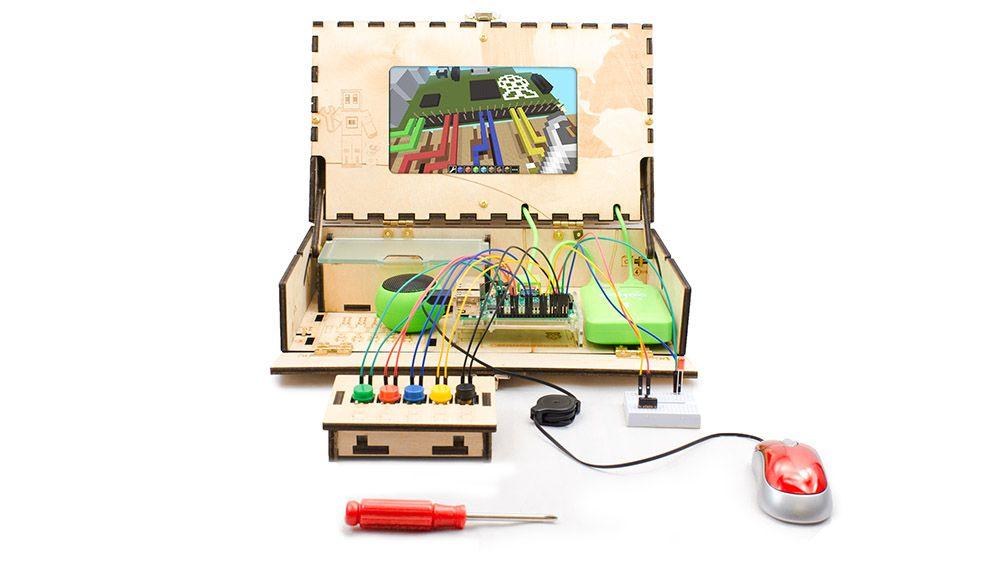We interviewed Mark Pavluykovskiy — the creator of the Piper educational computer. We asked him about immigrating from Ukraine to the US, how he almost died in Africa, graduated from Princeton, dropped out of a doctorate in Oxford and created a product that deserved a praise from Satia Nadella and Steve Wozniak.
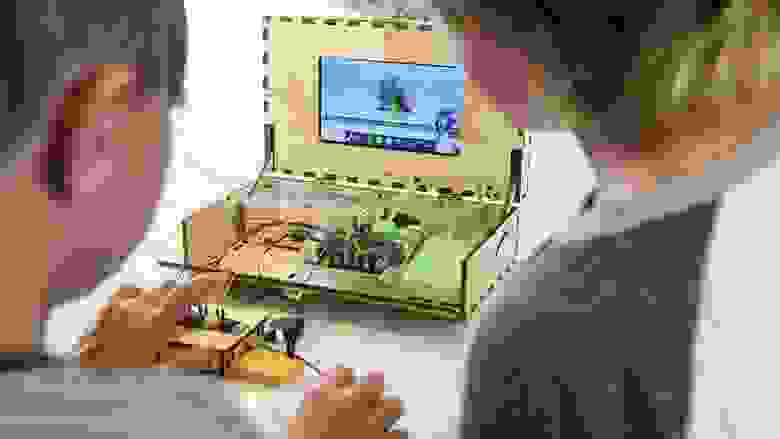
In mid-October the Sistema_VC venture capital fund hosted a conference called Machine Teaching, where creators of various educational startups assembled to talk about technical advancements.
The special guest was Mark Pavluykosvkiy, the creator of Piper. His company created an educational computer — a children’s toy that, using wires, circuit boards and Minecraft teaches programming and engineering to children. A couple of years ago Mark completed a successful Kickstarter campaign, got a couple of Silicon Valley investors on board and raised around $11 million dollars in investments. Now he’s a member of Forbes’ “30 under 30” list, while his project is used by Satia Nadella and Steve Wozniak, among others.
Mark himself is a former Princeton and Oxford student. He was born in Ukraine, but moved to the US with his mother when he was a child. In various interviews Mark claimed that he doesn’t consider himself a genius, but simply someone who got very lucky. A lot of other people aren’t so lucky, however, and he considers it unfair. Driven by this notion, during his junior year he flew to Africa, where he almost died.
He visited Russia for the first time this weekend. It seemed like no one in America told him about snow, valenkis, bears and how you can freeze to death here. Maybe they just assumed he knew all that already — not to awaken childhood traumas and all that. So he’s dressed, let’s say, not to weather.
When preparing for the interview, I expected him to be a typical Silicon Valley businessman — another Tony Robbins, smiling all the time and just radiating positive energy. But Mark looked like he carried the weight of the world on his shoulders. Tired, looking inward, talking quietly, carefully picking words from a language he has slightly forgotten over time. Maybe it’s just jetlag, but I had a feeling it wasn’t at all.
He took to the interview a giant briefcase, like he just got off the plane, even though he arrived a day earlier. Inside was a box with his computer, which took up an entire table in our cafe.
On one hand, I wanted to play with wires and buttons and understand why kids love it so much. On the other — I needed to know why a young entrepreneur would leave a top-10 university and go to Africa to save children and lament about an unfair world.
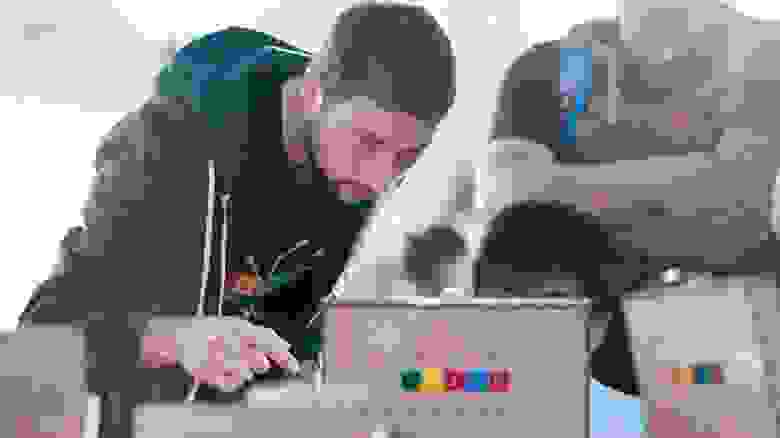
I’ve read that you moved from Ukraine to the US at the age of 9, then moved back, and then back to America again. Why so?
Honestly, I first arrived in American when I was five. After half a year, I told my mother I didn’t like it, so we moved back. We lived in Louisiana — one of the poorest states in the US, not representative of the country at large. Not knowing English and being in a “migrant” class because of that, it was hard to get by.
Maybe it was just my Russian heritage showing, but when I didn’t like something, I always picked a fight with someone, and I always got punished. So I got back. And then, after two years in a Ukrainian school, I returned to America again.
In Ukraine everything was different. It was during a recession — we collected glass bottles and donated them to get some money and go play some PlayStation. The TV had five channels. If I had a chance to watch some cartoons for half an hour, it was a lucky day. But in America, everyone had lots of toys, there wasn’t always space for them all in homes. There’s a dedicated channel that just runs cartoons 24/7. That’s how I learned English: just watching cartoons through the night.
Before I was 18, I managed to travel six states. We moved around the country a lot.
Did your parents have some sort of business?
My mother moved to study, and I just followed her. She hopped program to program. It was tough: once I had finally settled in, it was time to move again. At least I met a lot of people along the way, and I believe it helped me become more open and flexible socially.
I’ve heard that parents helped you with Piper. Is it true?
My mother was against it. She wanted me to become a doctor, to do something stable. So she didn’t support this too much. I studied biology first, and I think she’s still a bit bummed that I dropped out of the doctorate there.
Even when Piper became successful?
I don’t know… I think she still doesn’t believe it’ll last. Too unstable, unpredictable.

You went to Princeton, right?
Correct. Then I went to Oxford and worned on a doctorate about applying computer science and machine learning in biology. We analyzed cancer scans. But I soon dropped out.
Why?
I figured out that I needed to work in a team where progress is seen every day. When you’re working on a doctorate, you work alone for days, weeks, sometimes months. My professor was rather famous and respected in the UK, so he couldn’t spend much time with us, and I lacked feedback and communication.
Damn, of the people I talk with, a lot would like to defeat cancer through technology, and you just thought it was boring.
All these breakthroughs that people make — I thought they were miniscule. In academics, everything revolves around publications. It’s very hard to publish something big and major, so people move in very small steps.
To earn a publication, all you need is just move something from one trade to another, and it’ll look new and revolutionary. And won’t help anyone at all ever.
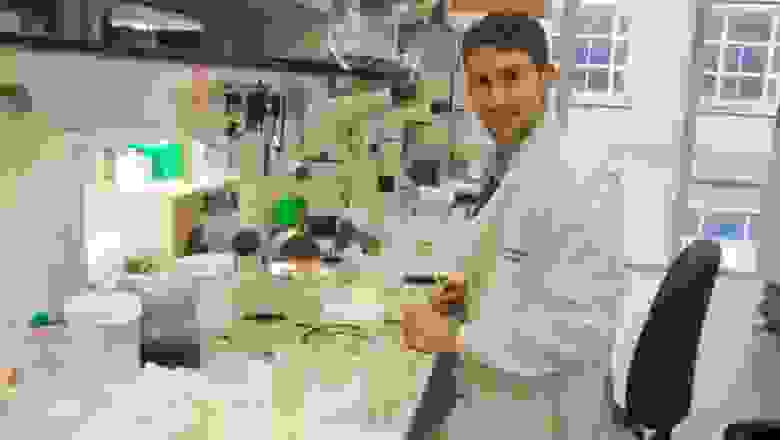
So, you’re more of a businessman now, or an engineer?
I don’t even know. But I would recommend everyone to try yourself in a science — math, engineering, anything, It cultivates a certain way of thinking — academic way — that will help you in life. There’s a hypothesis, you test it out, try various things, and then prove or disprove it. This is very important for our society, it’s why it achieved so much. It helped in business, too.
I don’t know how I would describe myself. I think it’s more important how people solve problems.
Is it true that you went to Africa?
Yes, during my junior year. I wanted to do something… more active. I felt I was very lucky to be in America, I had an opportunity to do a lot of things.
I traveled to Ukraine a bit, visiting friends. I didn’t consider myself more clever or talented than them. So I wanted to help others use their talents as well. I thought — well, I know some biology. How can I use it in a practical way?
African countries are awash with diseases. Even simple diarrhea can kill a person. But all these diseases are easily preventable. I didn’t understand why they even still exist and thought I could help. Plus I would give my knowledge to children through games and better their lives. So, I created an educational program based on games and arrived in Ghana.

Why Africa in particular? Did you have any urge to get back to Ukraine and do something there?
I thought it was a lot harder. Ukraine’s problems are related to forces i don’t understand, more of a political nature, whereas in Africa solutions were simple — don’t do that and you won’t get sick. I thought it was easier to understand and solve.
What did you do there in particular?
I had a hunch that children get sick simply because they don’t know how to guard against diseases. If I could give them that knowledge in an engaging form (like games), they would remember it better and there would be less diseases.
The gist of it was very simple — take care of your body, wash your hands, guard against mosquitos. Over there they cook and serve contaminated food because they don’t clean it beforehand, and eat them with dirty hands.
It turned out it wasn’t all that simple. The reasons were a lot wider. People got sick not because they didn’t know — in fact, they know it all better than everyone else. They simply don’t have the infrastructure. There isn’t anywhere to wash their hands.
So in the end, I got sick myself. I was in a very bad condition when I left. My hunch was wrong, and it allowed me to understand the world a bit more.
How exactly?
That going somewhere in person isn’t the most effective solution. So I decided to learn to program, to build something capable of helping thousands or even millions of people.

So you wanted to do something yourself instead of teaching others?
No, I wanted to teach as well, just on a bigger scale.
I took some programming courses on Java. Along the way, I wanted to create a website for Princeton students to hold debates with professors. Princeton has a lot of interesting people — Nobel Prize winners, award-winning authors etc. But sometimes there isn’t time to attend all the lectures you want and most students can’t meet them at all.
So I wanted to create a platform where professors ask questions, students answer them and start a debate. And the top 10 students, for example, got an opportunity to discuss it with them in person.
I launched, and we had six debates in total. That was it.
But it’s not a technological problem anymore. It’s harder to organize people and get them interested.
Exactly. The hardest part was convincing the professors.
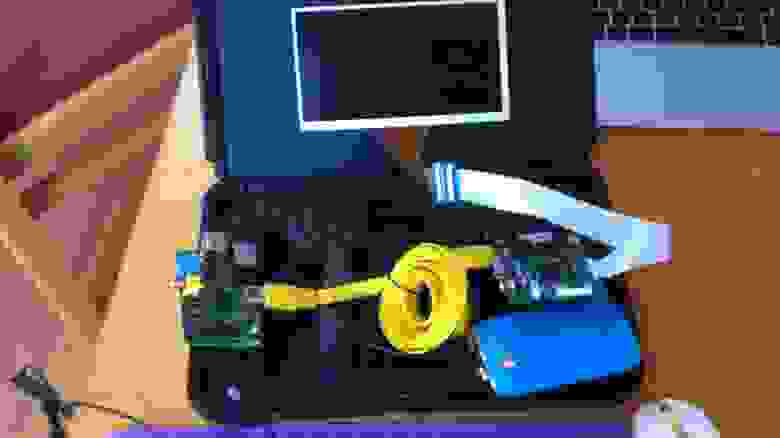 Early prototype of Piper
Early prototype of Piper
We officially founded the company in 2014. The project was in work for a year before that as well, but officially we exist for around 4 years.
When I was learning programming, I found out about the Raspberry Pi. It’s a $25 circuit board the size of a credit card. I have the smallest version of it on a keyring, you know how much it costs? $5! You can connect power, a monitor, a keyboard, and yet you can wear it on a keyring. I had a feeling that if something like this existed in my childhood, I would’ve played with it more than Lego.
Then we wanted to create a computer you can build yourself and learn programming using it. First we just copied the software from educational sites like CodeAcademy. The first one was about HTML/CSS.
The computer came with instructions, and kids wrote the code using them. But it wasn’t too engaging. Everyone said, “we want to play Minecraft”. We thought: maybe, create a Minecraft-style browser? You play as a small digger, you can go to any webpage and crush it. For example, you go to Wikipedia and dig for text, pictures, links.
We thought it was cool, but the kids disagreed, We couldn’t understand why, so we decided to change the approach entirely.
They would build the hardware themselves, using Minecraft like a manual. We tried it, and the kids liked it the most.
When you started using Minecraft, it was already Microsoft’s property?
I don’t remember exactly when they bought it — before or after we launched on Kickstarter. But they didn’t understand what we were doing at first and started writing angry letters to us. But we had a free version of Minecraft written for the Raspberry Pi specifically, so everyone could use it, so we had to explain that to Microsoft. Of course, they didn’t like it too much.
Nowadays, though, we have a rather good relationship. Satia Nadella even has a Piper. We haven’t talked in person yet, but he wrote an email thanking us for our work. He introduced us to some people within the company that we still communicate with. We tried to establish a formal partnership, but couldn’t manage to do it yet.
So we still think about creating our own “Minecraft” to get out from under Microsoft’s thumb. Some sort of platform where kids could get instructions in a 3D environment.
So you don’t have any contracts or agreements?
We don’t need one to use the product the way we do.
And how did the Piper get to Steve Wozniak?
He just noticed us on Kickstarter and wrote that he liked the product. Recently I invited him to a conference, where we finally met him in person. He has a very funny way of talking, it’s very quotable. Like, he said: “if you want your kid to become an inventor, Piper is the best toy for that”.

We use Raspbian — a Debian-based OS built for the Pi specifically. We don’t change anything. We have a free version of Minecraft that we modify through its own API to make out game interactive, add mission and objectives. We have 5 programmers, one of which is also a game designer.
We don’t want to depend on Minecraft too much. For example, we can’t use it on other platforms — tablets, smartphones, desktops. So we make our own 3D platform.,
It’s important for us to control the code base completely, so along the way we took Irrlicht Engine — an open-source game engine that is the base of Minetest — an open-source Minecraft clone. But it’s only halfway done, a lot of the stuff is missing. But it does have a lot of mods and extensions already, so we aren’t doing anything from complete scratch.
The Minecraft firmware for the PI is written in Python, so we write all Minecraft-related things in it. Minetest’s code base is in C++. The programming part is written in JavaScript.
Currently we port the game to Lua and work on the multiplayer function — our server would host a world visually indistinguishable from Minecraft, where people could freely walk, build and break things.
The hardest part is tying all of this into one project and doing it on a computer that lacks a lot of useful things. There aren’t any good development tools for the Pi. Game designers are used to working in Unity or Unreal, not many would agree to the limitations of our hardware.
We have a non-standard development stack, so we want to move away from Minecraft and control the code ourselves. For example, the programming part was done in JavaScript inside a standard web browser.
I talked to the guys who travel around the Russian wilderness and teach kids programming. They had a couple of apps, including some based on Minecraft. But they got rid of it because it didn’t let children express themselves — it simply gave them some ready-made blocks to work with. They focus on web programming, because with that a kid could make his own website and tell his story.
We did the same thing and our result was completely opposite. Maybe they looked at another age group? 3rd and 4th-graders don’t understand why they would make their own website.
You write something, and it turns into a picture on screen.
You could do the same with a pencil. Maybe, they’re more interested jn playing a game with their friends. A lot of the kids’ interests come from socializing. For example, their friends collect cards, play videogames, talk in Snapchat and Instagram etc. The biggest motivator for a kid to do something is “that’s what my friends do”.
If the kids are older, they already visit websites themselves, and it becomes relevant for them. When you use apps, websites, you see how they work and what they do, you want to do something yourself. And if you like Minecraft, or games in general, then you just want to continue doing it. Motivations always change, and it’s important to make it so it helps them learn.
What if you see Minecraft more as an entertainment medium than a learning one?
Depends on how you define “learning”. When you play a new game, you’re inevitably learning something. The question is, do you need this information? For example, how to shoot in Halo.
Some games have negative side effects, or they teach you skills that are irrelevant in the real world. But I think it’s very difficult to force someone to do something he doesn’t want to.
You can make Minecraft educational or not. The game itself isn’t inherently good nor bad.
How did you balance the difficulty?
We think it’s already simple enough. We could simplify it even more, for example, in the hardware part. There are examples of similar projects, where you just plop three things together and it works, but we thought it would be too simply. But we still searched for the right balance, where 80-90% of children could build a computer.
And can a 7-year-old really build it?
If he’s motivated, likes Minecraft and he wants to build a computer — sure.

What other scepticism did you encounter?
Anything you could imagine. For example, STEM-oriented parents want it to get even more technical, with more programming, higher difficulty, exams etc.
But in general, I haven’t met anyone who thinks the product’s bad or not needed. The most sceptical people are investors, but their concerns are purely materialistic: hardware, business model etc.
Can you really fund a project on Kickstarter or it’s just a promotion tool?
I think we got really lucky with Kickstarter. Now it’s a lot more difficult. Kickstarter is just a sales platform, after all. You can earn 15-20% more capital there compared to your own website. Maybe, on Kickstarter people buy a bit more because they trust it, like the brand or just want to think of themselves as people helping a cause.
But most of the work is on you — pooling traffic, promoting. That’s why most people use Kickstarter as a marketing device, as a pre-order service.
But I think that the initial idea of Kickstarter is that you have a groundbreaking idea, but no money. And kind people donate you money and pray that you could complete your project and deliver it to them.
It can happen if you’re lucky, someone writes about it, or your product perfectly fills a niche.
Once upon a time I too backed a project — a Raspberry Pi-based GameBoy emulator. The creator made a cool, nostalgia-filled video that promoted this idea — all Sega and GameBoy games in your pocket. He raised a quarter of a million dollars with no marketing budget at all. In the end I got my product, and it didn’t work.
60-70% of Kickstarter projects — even fully backed — can’t quite finish the job, because they don’t know how to produce products and ship them. We were lucky to be in the Bay Area and have mentors and investors who helped us with things like mass shipment.
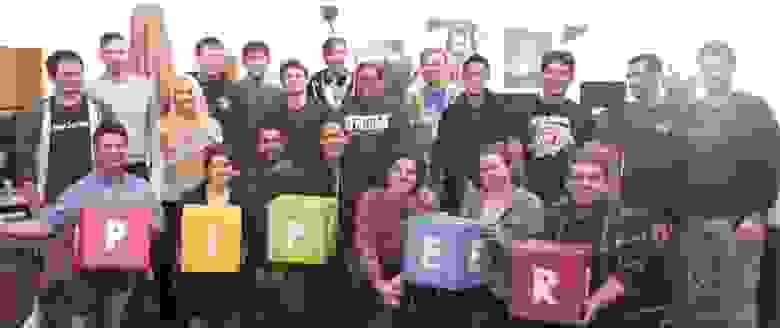
You said a lot that “it’s unfair that opportunities are distributed among people unequally”. Do you think that pushing people towards engineering only exacerbates the problem? Not everyone is happy to be a programmer, but some are forced to do so because that’s where money is nowadays. For example, a kid could be perfectly happy to be an ice cream truck driver, but in reality it’s not nearly as profitable.
We don’t think that programming is the only interesting occupation. We don’t care if the kid becomes a programmer or a journalist. If it was important for us to raise professionals, then we would’ve built a testing environment, tracked progress, held exams…
It’s important for us that the kid feels confident, that he understands that he could do anything he wants — he built a computer at an early age, after all.
We feel like all people who achieved something — be it in programming or otherwise — had some early impressions that gave them hope that they can do great things.
We want to deliver that impression to everyone. It’s important kids understand how technology works. It’s as important as understanding history, why the world is what it is today. Just to be a more developed person.
But that doesn’t mean everyone should become historians. Programming isn’t taught in a lot of places, but it’s needed everywhere.
Don’t you feel that’s exactly where that unfairness hides? Programmers are needed everywhere, but not everyone wants to commit their life to it. And if someone refuses, he seemingly throws away his future.
You know, I think the unfairness is that not everyone has that opportunity to learn in the first place. If everyone could build a computer and feel confident, no one sane would oppose that. The unfairness is that it costs money, both for us and for customers, which a lot of people don’t have.
Education is only available to those who can afford to pay for it — that’s the unfairness.
You’ve been in a lot of places, seen a lot. Could this world be fixed?
I don’t know for sure. But I think it’s important to believe that you can. If you believe, you spend resources to do it, you strive for it. If you think it’s inevitable, it’ll probably happen someday.
There are two tendencies that somewhat contradict each other. First: we should dive deeper into technology to understand and control everything. Second: we need to simplify everything, so you don’t need to code to make new things.
I believe we — humanity — have an innate urge to invent, improve, drive progress forward. The perfect solution is that you think of something, and then it just appears. But before we get to that point, something bad might happen. Say, we get too addicted to our phones and an AI takes over the world.
I think the biggest contradiction is when people think “I want everything to happen by itself” and at the same time are afraid something bad might happen/ Take Elon Musk: he wants to create self-driving cars, but at the same time he’s afraid of AI and funds an initiative to make TI open-source, so no one could use it for profit.
Martin Luther King one said: “History doesn’t always move in the right direction. There have to be people who drive it there”. The world won’t become perfect on its own. The opposite, actually. So we need people to understand, think and invent.
Last question: if you were to become immortal, what would you do?
Move to North Korea.
I think that would help with alleviating the pressure of the “ultimate deadline”. I would be a lot calmer, but do something more radical.

In mid-October the Sistema_VC venture capital fund hosted a conference called Machine Teaching, where creators of various educational startups assembled to talk about technical advancements.
The special guest was Mark Pavluykosvkiy, the creator of Piper. His company created an educational computer — a children’s toy that, using wires, circuit boards and Minecraft teaches programming and engineering to children. A couple of years ago Mark completed a successful Kickstarter campaign, got a couple of Silicon Valley investors on board and raised around $11 million dollars in investments. Now he’s a member of Forbes’ “30 under 30” list, while his project is used by Satia Nadella and Steve Wozniak, among others.
Mark himself is a former Princeton and Oxford student. He was born in Ukraine, but moved to the US with his mother when he was a child. In various interviews Mark claimed that he doesn’t consider himself a genius, but simply someone who got very lucky. A lot of other people aren’t so lucky, however, and he considers it unfair. Driven by this notion, during his junior year he flew to Africa, where he almost died.
He visited Russia for the first time this weekend. It seemed like no one in America told him about snow, valenkis, bears and how you can freeze to death here. Maybe they just assumed he knew all that already — not to awaken childhood traumas and all that. So he’s dressed, let’s say, not to weather.
When preparing for the interview, I expected him to be a typical Silicon Valley businessman — another Tony Robbins, smiling all the time and just radiating positive energy. But Mark looked like he carried the weight of the world on his shoulders. Tired, looking inward, talking quietly, carefully picking words from a language he has slightly forgotten over time. Maybe it’s just jetlag, but I had a feeling it wasn’t at all.
He took to the interview a giant briefcase, like he just got off the plane, even though he arrived a day earlier. Inside was a box with his computer, which took up an entire table in our cafe.
On one hand, I wanted to play with wires and buttons and understand why kids love it so much. On the other — I needed to know why a young entrepreneur would leave a top-10 university and go to Africa to save children and lament about an unfair world.

Immigration, Africa, Princeton
I’ve read that you moved from Ukraine to the US at the age of 9, then moved back, and then back to America again. Why so?
Honestly, I first arrived in American when I was five. After half a year, I told my mother I didn’t like it, so we moved back. We lived in Louisiana — one of the poorest states in the US, not representative of the country at large. Not knowing English and being in a “migrant” class because of that, it was hard to get by.
Maybe it was just my Russian heritage showing, but when I didn’t like something, I always picked a fight with someone, and I always got punished. So I got back. And then, after two years in a Ukrainian school, I returned to America again.
In Ukraine everything was different. It was during a recession — we collected glass bottles and donated them to get some money and go play some PlayStation. The TV had five channels. If I had a chance to watch some cartoons for half an hour, it was a lucky day. But in America, everyone had lots of toys, there wasn’t always space for them all in homes. There’s a dedicated channel that just runs cartoons 24/7. That’s how I learned English: just watching cartoons through the night.
Before I was 18, I managed to travel six states. We moved around the country a lot.
Did your parents have some sort of business?
My mother moved to study, and I just followed her. She hopped program to program. It was tough: once I had finally settled in, it was time to move again. At least I met a lot of people along the way, and I believe it helped me become more open and flexible socially.
I’ve heard that parents helped you with Piper. Is it true?
My mother was against it. She wanted me to become a doctor, to do something stable. So she didn’t support this too much. I studied biology first, and I think she’s still a bit bummed that I dropped out of the doctorate there.
Even when Piper became successful?
I don’t know… I think she still doesn’t believe it’ll last. Too unstable, unpredictable.
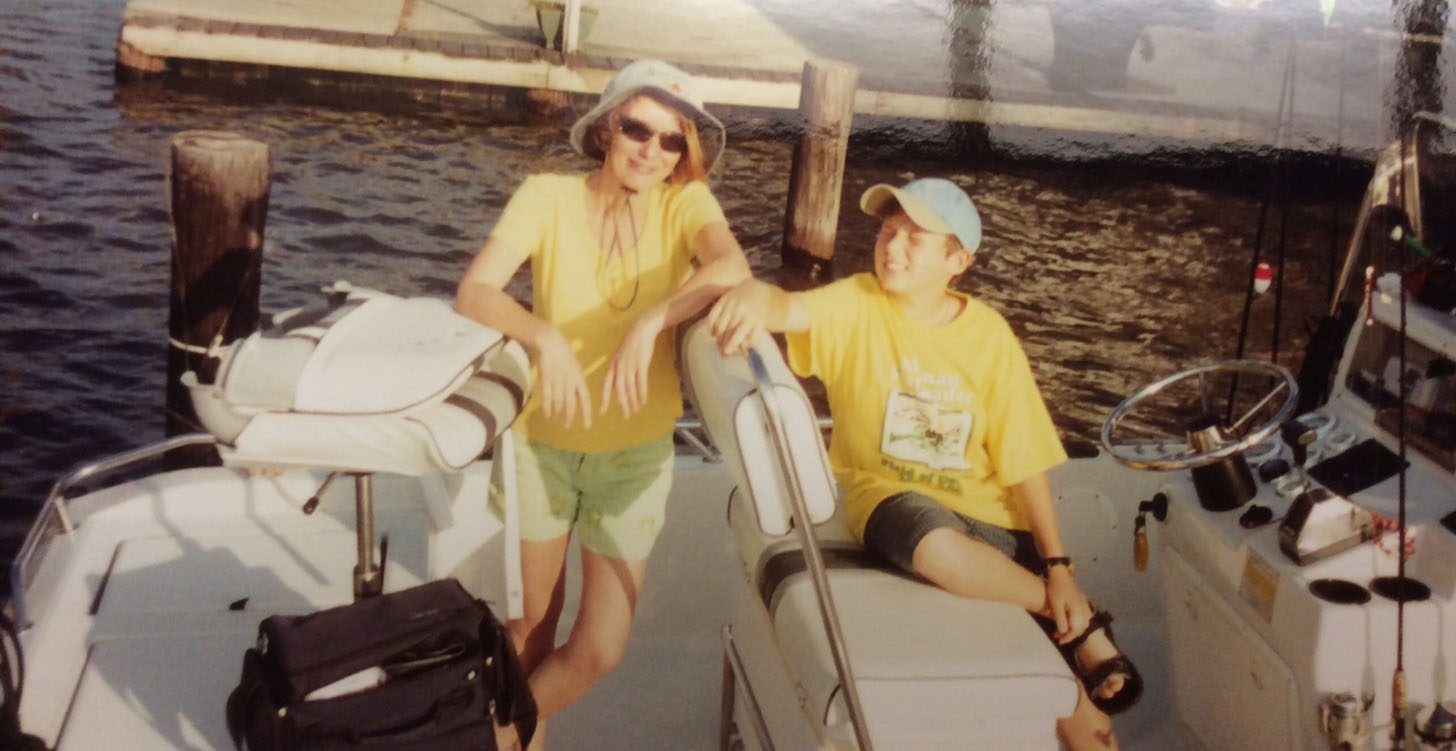
You went to Princeton, right?
Correct. Then I went to Oxford and worned on a doctorate about applying computer science and machine learning in biology. We analyzed cancer scans. But I soon dropped out.
Why?
I figured out that I needed to work in a team where progress is seen every day. When you’re working on a doctorate, you work alone for days, weeks, sometimes months. My professor was rather famous and respected in the UK, so he couldn’t spend much time with us, and I lacked feedback and communication.
Damn, of the people I talk with, a lot would like to defeat cancer through technology, and you just thought it was boring.
All these breakthroughs that people make — I thought they were miniscule. In academics, everything revolves around publications. It’s very hard to publish something big and major, so people move in very small steps.
To earn a publication, all you need is just move something from one trade to another, and it’ll look new and revolutionary. And won’t help anyone at all ever.

So, you’re more of a businessman now, or an engineer?
I don’t even know. But I would recommend everyone to try yourself in a science — math, engineering, anything, It cultivates a certain way of thinking — academic way — that will help you in life. There’s a hypothesis, you test it out, try various things, and then prove or disprove it. This is very important for our society, it’s why it achieved so much. It helped in business, too.
I don’t know how I would describe myself. I think it’s more important how people solve problems.
Is it true that you went to Africa?
Yes, during my junior year. I wanted to do something… more active. I felt I was very lucky to be in America, I had an opportunity to do a lot of things.
I traveled to Ukraine a bit, visiting friends. I didn’t consider myself more clever or talented than them. So I wanted to help others use their talents as well. I thought — well, I know some biology. How can I use it in a practical way?
African countries are awash with diseases. Even simple diarrhea can kill a person. But all these diseases are easily preventable. I didn’t understand why they even still exist and thought I could help. Plus I would give my knowledge to children through games and better their lives. So, I created an educational program based on games and arrived in Ghana.
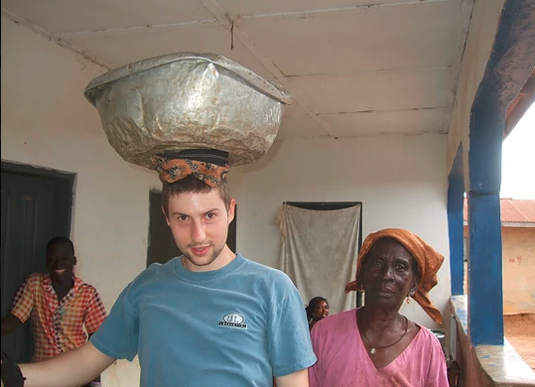
Why Africa in particular? Did you have any urge to get back to Ukraine and do something there?
I thought it was a lot harder. Ukraine’s problems are related to forces i don’t understand, more of a political nature, whereas in Africa solutions were simple — don’t do that and you won’t get sick. I thought it was easier to understand and solve.
What did you do there in particular?
I had a hunch that children get sick simply because they don’t know how to guard against diseases. If I could give them that knowledge in an engaging form (like games), they would remember it better and there would be less diseases.
The gist of it was very simple — take care of your body, wash your hands, guard against mosquitos. Over there they cook and serve contaminated food because they don’t clean it beforehand, and eat them with dirty hands.
It turned out it wasn’t all that simple. The reasons were a lot wider. People got sick not because they didn’t know — in fact, they know it all better than everyone else. They simply don’t have the infrastructure. There isn’t anywhere to wash their hands.
So in the end, I got sick myself. I was in a very bad condition when I left. My hunch was wrong, and it allowed me to understand the world a bit more.
How exactly?
That going somewhere in person isn’t the most effective solution. So I decided to learn to program, to build something capable of helping thousands or even millions of people.
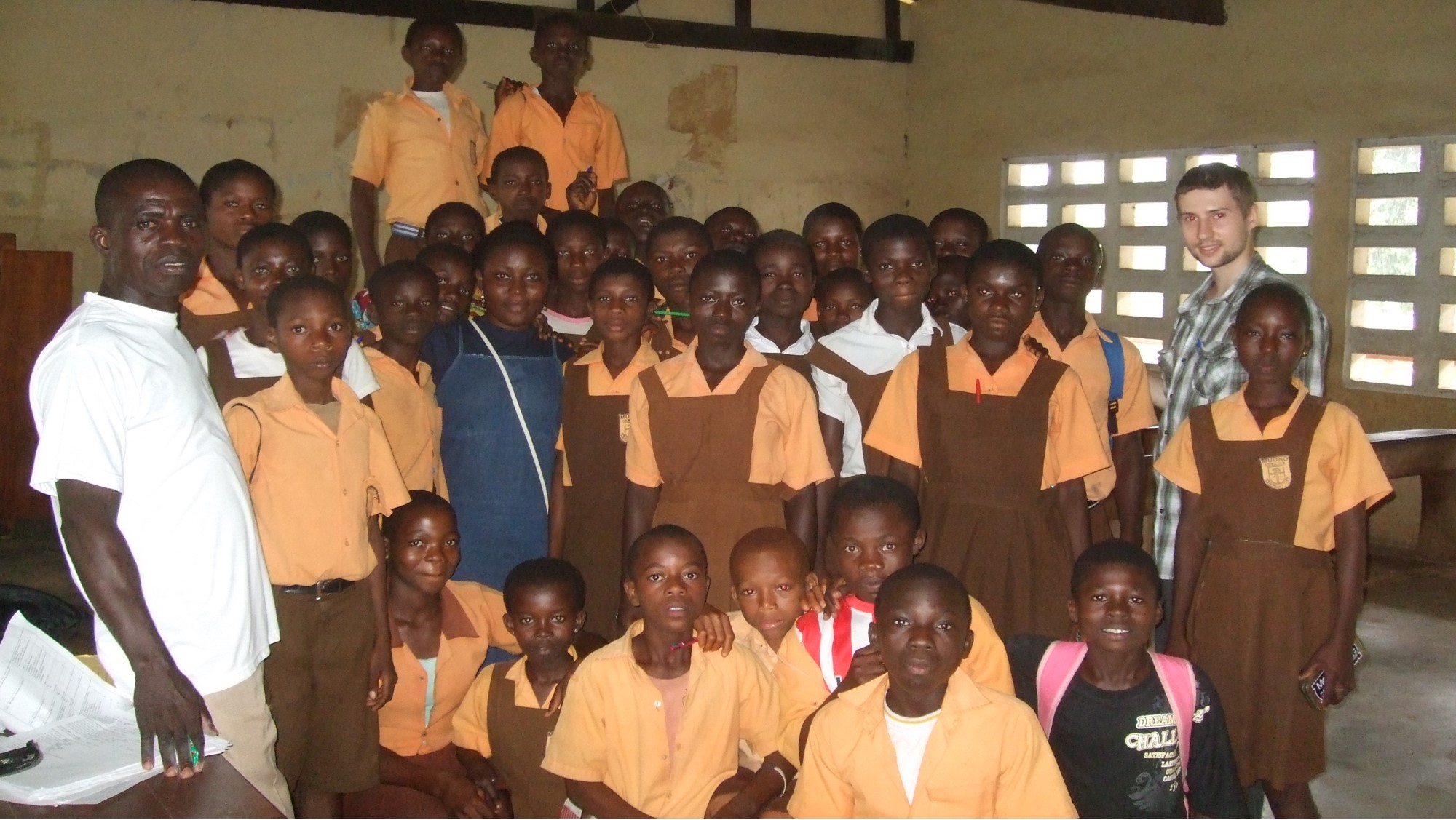
So you wanted to do something yourself instead of teaching others?
No, I wanted to teach as well, just on a bigger scale.
I took some programming courses on Java. Along the way, I wanted to create a website for Princeton students to hold debates with professors. Princeton has a lot of interesting people — Nobel Prize winners, award-winning authors etc. But sometimes there isn’t time to attend all the lectures you want and most students can’t meet them at all.
So I wanted to create a platform where professors ask questions, students answer them and start a debate. And the top 10 students, for example, got an opportunity to discuss it with them in person.
I launched, and we had six debates in total. That was it.
But it’s not a technological problem anymore. It’s harder to organize people and get them interested.
Exactly. The hardest part was convincing the professors.
The beginnings of Piper
 Early prototype of Piper
Early prototype of PiperWe officially founded the company in 2014. The project was in work for a year before that as well, but officially we exist for around 4 years.
When I was learning programming, I found out about the Raspberry Pi. It’s a $25 circuit board the size of a credit card. I have the smallest version of it on a keyring, you know how much it costs? $5! You can connect power, a monitor, a keyboard, and yet you can wear it on a keyring. I had a feeling that if something like this existed in my childhood, I would’ve played with it more than Lego.
Then we wanted to create a computer you can build yourself and learn programming using it. First we just copied the software from educational sites like CodeAcademy. The first one was about HTML/CSS.
The computer came with instructions, and kids wrote the code using them. But it wasn’t too engaging. Everyone said, “we want to play Minecraft”. We thought: maybe, create a Minecraft-style browser? You play as a small digger, you can go to any webpage and crush it. For example, you go to Wikipedia and dig for text, pictures, links.
We thought it was cool, but the kids disagreed, We couldn’t understand why, so we decided to change the approach entirely.
They would build the hardware themselves, using Minecraft like a manual. We tried it, and the kids liked it the most.
When you started using Minecraft, it was already Microsoft’s property?
I don’t remember exactly when they bought it — before or after we launched on Kickstarter. But they didn’t understand what we were doing at first and started writing angry letters to us. But we had a free version of Minecraft written for the Raspberry Pi specifically, so everyone could use it, so we had to explain that to Microsoft. Of course, they didn’t like it too much.
Nowadays, though, we have a rather good relationship. Satia Nadella even has a Piper. We haven’t talked in person yet, but he wrote an email thanking us for our work. He introduced us to some people within the company that we still communicate with. We tried to establish a formal partnership, but couldn’t manage to do it yet.
So we still think about creating our own “Minecraft” to get out from under Microsoft’s thumb. Some sort of platform where kids could get instructions in a 3D environment.
So you don’t have any contracts or agreements?
We don’t need one to use the product the way we do.
And how did the Piper get to Steve Wozniak?
He just noticed us on Kickstarter and wrote that he liked the product. Recently I invited him to a conference, where we finally met him in person. He has a very funny way of talking, it’s very quotable. Like, he said: “if you want your kid to become an inventor, Piper is the best toy for that”.
How to build a Piper, how to play and what you could learn
When Mark got the the computer out of the box, it had a funny optical illusion from the paper moving. It looked like there are gears turning inside. He says that the product should entice you from the very start. He also pulled a rolled instruction booklet out of the box. It resembled a classic engineering scheme on blue paper, and it was so big you couldn’t hold it unrolled. At first glance, it doesn’t look like a 7-year-old would understand anything at all, but Mark says: “It only feels that way to adults”.
The case is a wooden box that you assemble yourself. You insert a monitor into the top part and the Raspberry Pi, the power supply and other small parts into the bottom one.
We fired the machine up. The screen lit up with a menu, where Mark selected Story Mode. It launched a video about how a meteorite is about to hit Earth, and only a Mars-based robot could stop it. That’s who you control.
To take control of the robot, you need to find where to connect the mouse. That’s simple enough, but aside from moving the cursor you can’t do anything with it yet. To make the robot move, you need to build a controller — and that’s where the real fun starts.
The screen displayed some instructions. I was asked to take two wires and plug them into the circuit board. When you connect the free ends of the wires, the robot walks. I’m 29, and when I did it and robot on the screen actually walked, I got a genuine kick out of it.
Of course, connecting wires all the time isn’t too convenient, so I continued to follow instructions and plugged the wires into another circuit board, and then mounted a button onto it. Now the robot walked when I pressed the button — a first step to creating a real controller.
To beat the game, you constantly need to re-attach and build things — controllers, LEDs, circuit boards. Aside from Minecraft, there’s another mode where you could program everything you just built. It looks like a constructor of pre-made code strings and commands. For example, you build an LED, set a command that makes it glow, plop a repeat function on top of it, set parameters — and the LED starts to flash.
So, to everyone who was at this conference — I’m sorry. We were late because we were too busy playing with Piper.
Technologies of Piper

We use Raspbian — a Debian-based OS built for the Pi specifically. We don’t change anything. We have a free version of Minecraft that we modify through its own API to make out game interactive, add mission and objectives. We have 5 programmers, one of which is also a game designer.
We don’t want to depend on Minecraft too much. For example, we can’t use it on other platforms — tablets, smartphones, desktops. So we make our own 3D platform.,
It’s important for us to control the code base completely, so along the way we took Irrlicht Engine — an open-source game engine that is the base of Minetest — an open-source Minecraft clone. But it’s only halfway done, a lot of the stuff is missing. But it does have a lot of mods and extensions already, so we aren’t doing anything from complete scratch.
The Minecraft firmware for the PI is written in Python, so we write all Minecraft-related things in it. Minetest’s code base is in C++. The programming part is written in JavaScript.
Currently we port the game to Lua and work on the multiplayer function — our server would host a world visually indistinguishable from Minecraft, where people could freely walk, build and break things.
The hardest part is tying all of this into one project and doing it on a computer that lacks a lot of useful things. There aren’t any good development tools for the Pi. Game designers are used to working in Unity or Unreal, not many would agree to the limitations of our hardware.
We have a non-standard development stack, so we want to move away from Minecraft and control the code ourselves. For example, the programming part was done in JavaScript inside a standard web browser.
Scepticism
I talked to the guys who travel around the Russian wilderness and teach kids programming. They had a couple of apps, including some based on Minecraft. But they got rid of it because it didn’t let children express themselves — it simply gave them some ready-made blocks to work with. They focus on web programming, because with that a kid could make his own website and tell his story.
We did the same thing and our result was completely opposite. Maybe they looked at another age group? 3rd and 4th-graders don’t understand why they would make their own website.
You write something, and it turns into a picture on screen.
You could do the same with a pencil. Maybe, they’re more interested jn playing a game with their friends. A lot of the kids’ interests come from socializing. For example, their friends collect cards, play videogames, talk in Snapchat and Instagram etc. The biggest motivator for a kid to do something is “that’s what my friends do”.
If the kids are older, they already visit websites themselves, and it becomes relevant for them. When you use apps, websites, you see how they work and what they do, you want to do something yourself. And if you like Minecraft, or games in general, then you just want to continue doing it. Motivations always change, and it’s important to make it so it helps them learn.
What if you see Minecraft more as an entertainment medium than a learning one?
Depends on how you define “learning”. When you play a new game, you’re inevitably learning something. The question is, do you need this information? For example, how to shoot in Halo.
Some games have negative side effects, or they teach you skills that are irrelevant in the real world. But I think it’s very difficult to force someone to do something he doesn’t want to.
You can make Minecraft educational or not. The game itself isn’t inherently good nor bad.
How did you balance the difficulty?
We think it’s already simple enough. We could simplify it even more, for example, in the hardware part. There are examples of similar projects, where you just plop three things together and it works, but we thought it would be too simply. But we still searched for the right balance, where 80-90% of children could build a computer.
And can a 7-year-old really build it?
If he’s motivated, likes Minecraft and he wants to build a computer — sure.
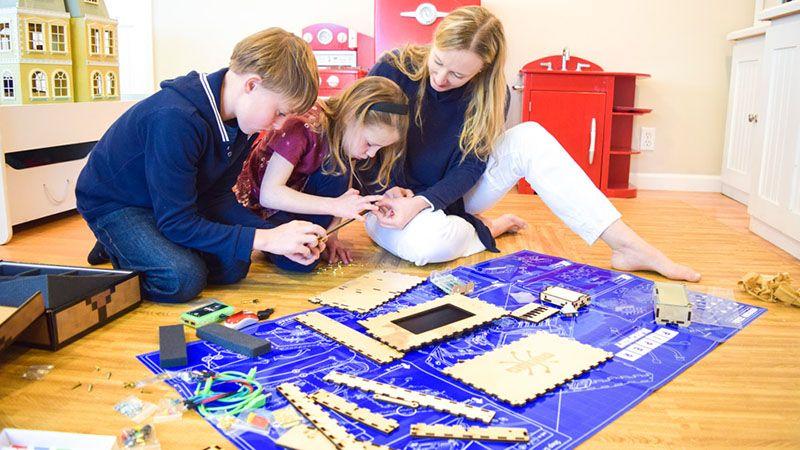
What other scepticism did you encounter?
Anything you could imagine. For example, STEM-oriented parents want it to get even more technical, with more programming, higher difficulty, exams etc.
But in general, I haven’t met anyone who thinks the product’s bad or not needed. The most sceptical people are investors, but their concerns are purely materialistic: hardware, business model etc.
Kickstarter promotion
Can you really fund a project on Kickstarter or it’s just a promotion tool?
I think we got really lucky with Kickstarter. Now it’s a lot more difficult. Kickstarter is just a sales platform, after all. You can earn 15-20% more capital there compared to your own website. Maybe, on Kickstarter people buy a bit more because they trust it, like the brand or just want to think of themselves as people helping a cause.
But most of the work is on you — pooling traffic, promoting. That’s why most people use Kickstarter as a marketing device, as a pre-order service.
But I think that the initial idea of Kickstarter is that you have a groundbreaking idea, but no money. And kind people donate you money and pray that you could complete your project and deliver it to them.
It can happen if you’re lucky, someone writes about it, or your product perfectly fills a niche.
Once upon a time I too backed a project — a Raspberry Pi-based GameBoy emulator. The creator made a cool, nostalgia-filled video that promoted this idea — all Sega and GameBoy games in your pocket. He raised a quarter of a million dollars with no marketing budget at all. In the end I got my product, and it didn’t work.
60-70% of Kickstarter projects — even fully backed — can’t quite finish the job, because they don’t know how to produce products and ship them. We were lucky to be in the Bay Area and have mentors and investors who helped us with things like mass shipment.

Unfairness and the point of learning
You said a lot that “it’s unfair that opportunities are distributed among people unequally”. Do you think that pushing people towards engineering only exacerbates the problem? Not everyone is happy to be a programmer, but some are forced to do so because that’s where money is nowadays. For example, a kid could be perfectly happy to be an ice cream truck driver, but in reality it’s not nearly as profitable.
We don’t think that programming is the only interesting occupation. We don’t care if the kid becomes a programmer or a journalist. If it was important for us to raise professionals, then we would’ve built a testing environment, tracked progress, held exams…
It’s important for us that the kid feels confident, that he understands that he could do anything he wants — he built a computer at an early age, after all.
We feel like all people who achieved something — be it in programming or otherwise — had some early impressions that gave them hope that they can do great things.
We want to deliver that impression to everyone. It’s important kids understand how technology works. It’s as important as understanding history, why the world is what it is today. Just to be a more developed person.
But that doesn’t mean everyone should become historians. Programming isn’t taught in a lot of places, but it’s needed everywhere.
Don’t you feel that’s exactly where that unfairness hides? Programmers are needed everywhere, but not everyone wants to commit their life to it. And if someone refuses, he seemingly throws away his future.
You know, I think the unfairness is that not everyone has that opportunity to learn in the first place. If everyone could build a computer and feel confident, no one sane would oppose that. The unfairness is that it costs money, both for us and for customers, which a lot of people don’t have.
Education is only available to those who can afford to pay for it — that’s the unfairness.
You’ve been in a lot of places, seen a lot. Could this world be fixed?
I don’t know for sure. But I think it’s important to believe that you can. If you believe, you spend resources to do it, you strive for it. If you think it’s inevitable, it’ll probably happen someday.
There are two tendencies that somewhat contradict each other. First: we should dive deeper into technology to understand and control everything. Second: we need to simplify everything, so you don’t need to code to make new things.
I believe we — humanity — have an innate urge to invent, improve, drive progress forward. The perfect solution is that you think of something, and then it just appears. But before we get to that point, something bad might happen. Say, we get too addicted to our phones and an AI takes over the world.
I think the biggest contradiction is when people think “I want everything to happen by itself” and at the same time are afraid something bad might happen/ Take Elon Musk: he wants to create self-driving cars, but at the same time he’s afraid of AI and funds an initiative to make TI open-source, so no one could use it for profit.
Martin Luther King one said: “History doesn’t always move in the right direction. There have to be people who drive it there”. The world won’t become perfect on its own. The opposite, actually. So we need people to understand, think and invent.
Last question: if you were to become immortal, what would you do?
Move to North Korea.
I think that would help with alleviating the pressure of the “ultimate deadline”. I would be a lot calmer, but do something more radical.
